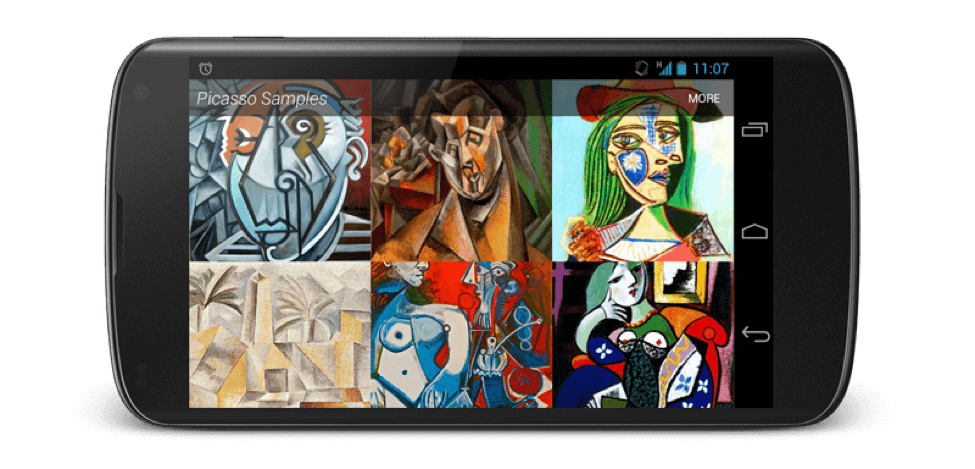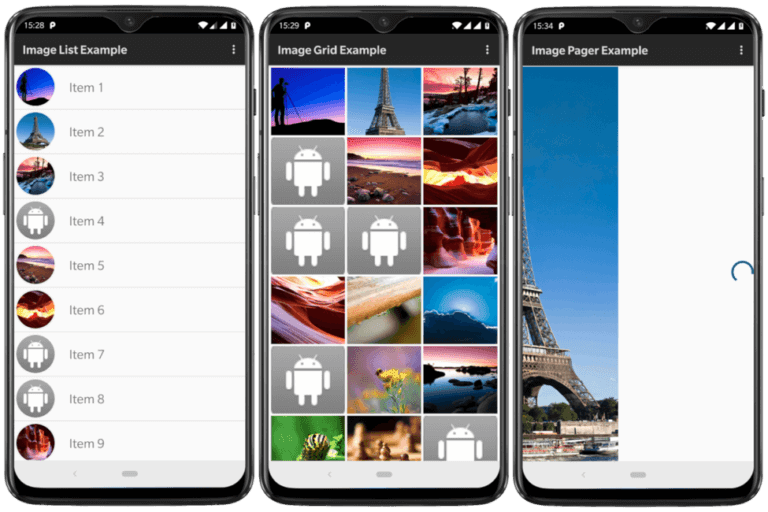4 Best Android Libraries for Lazy Image Loading
Images drive user experience. People are said to be highly visual creatures. This is why face-to-face communication is often broken into three elements—7% spoken words, 38% voice and tone, and 55% body language—according to Albert Mehrabian’s 7-38-55 rule of personal communication.
We perceive the world mainly through our eyesight, picking up fewer signals from the rest of the senses. As entire global economies continue to digitize their products and services, and consumers adopt more technologies into their lives, images become a crucial component in the development cycle.
Technology users demand a seamless user experience. Ensuring that apps can do fast and efficient image loading is not only an essential part of the development cycle, but a sacred promise to consumers. An app that fails to load an image blurs or distorts the user’s ability to perceive—and possibly use—the application.
Traditionally, to ensure fast image loading, developers had to write a lot of code, and handle any problem manually. Nowadays, developers can use lazy image loading to save time while increasing loading speed. Read on to learn how lazy image loading can help free up your time, and which image libraries are best suited to Android.
What Is Image Loading?
Image loading is the process of programming your application or website to load remote images in a fast and efficient manner.
While some Android apps store images locally, most apps are required to load images remotely on a regular basis. To enable this capability, developers usually need to manually configure the following tasks:
- Prevent usage interruptions by forcing the image loading process into the backend
- Recycle images to increase load speed
- Display images only after they’re loaded successfully
- Cache images in local memory for the future use
- To avoid duplications, load images only if the net connection is available
- Set up efficient memory management for the project
Traditionally, you’d need to write the code for the entire image loading process, including the above tasks and any additional client requirements. If you would rather skip some or all of the stages in this process, tray the lazy image loading approach.
What Is Lazy Image Loading?
In today’s agile-centric landscape, many developers find themselves pressed between the need to increase their work speed and the demand for producing quality work. When efficiency becomes a top priority, delegating manual work to the machine can help save a lot of time.
Lazy image loading means delegating image loading tasks to a ready-made program. You don’t need to write the entire code. Once you set up the library, it’ll take care of the process for you by initiating an asynchronous load/download process. The library runs in the background, so you won’t have to worry about interruptions to the user experience.
Be sure to choose an image loading libraries that suit your needs. While the libraries were designed for the same purpose, they don’t necessarily offer the same functionalities.
What Is the Difference Between Image Lazy Loading and Digital Asset Management?
Digital Asset Management (DAM) solutions provide a suite of tools for managing digital assets. Some DAM tools offer management for rich media only, while other solutions are designed to handle all media formats. The offered management features vary from one solution to another, but most include image loading in their image management suite.
While image loading libraries take care only of the loading aspect of managing image assets, image loading is only one feature in the larger scale of a digital asset management solution.
Best Android Libraries for Lazy Image Loading

Glide is an open source media management and image loading library for Android. It’s a great fit for developers looking for an intuitive user experience. Here’s a use case for loading an image using Glide.
Glide offers the following features:
- Media decoding
- Memory and disk caching
- Resource pooling
- Media fetching
- Displaying video stills, images, and animated GIFs
- A flexible API that can connect to many network stacks
Why you should use Glide
- Simple and user-friendly interface
- Easy setup
- Maintained by an active community
- Increases the load speed
- Smart and automatic downsampling and caching
- Recycles resources such as Bitmaps
- Prioritizes requests for active Fragments and Activities
Picasso

Picasso is an open source image downloading and caching library, designed to automatically handle image loading on Android. You can find several use cases for loading an image from a URL instead of loading it from cache using Picasso.
Picasso offers the following features:
- Automatic memory and disk caching
- Complex image transformations
- Automatic adapter re-use for ImageView recycling and download cancelation
- Placeholders for downloads and errors
Why you should use Picasso
- Easy to use
- Simple setup
- Built for speed
- Automatic capabilities
- Small size and method count
Fresco

Fresco is an open source image management library for Android, built for automatic loading and processing at a big scale. Code snippet examples for Frensco are abundant. You can find a few good Fresco examples here.
Fresco offers the following features:
- Displaying image placeholders until the image arrives from the network, the local storage or a local resource.
- Two levels of cache, in memory and in internal storage.
- Streaming progressive JPEGs
- Displaying animated GIFs and WebPs
- Image loading and displaying customization
Why you should use Fresco
- Easy to use
- Simple setup through the configuration custom view
- Optimized memory usage and allocation
- Robust configuration options
- Comprehensive documentation
Universal Image Loader (UIL)

Universal Image Loader (UIL) is an open source image loading library for Android, popular due to its robust configuration options. Just like our other libraries on the list, UIL also has some great code snippet examples available on our code library.
UIL offers the following features:
- Comprehensive documentation
- Builders enable flexible customization
- Image decoding
- Memory and disk cache customization
- Display image customization
Why you should use UIL
- You can handle complex library configurations
- You need an easy method to download images
- You need robust configuration options
- You need multithread image loading for either asynchronous or synchronous
Which Image Loading Library Is Best for You?
Most tools aren’t divided into good or bad categories. Each tool has distinct features that might suit your needs. In our dynamic world, you’ll find that many tools become obsolete faster than you can learn how to use them.
It’s important to choose tools that are actively maintained and updated, so you’ll be able to maintain stability in your workflows. If a tool is actively maintained, there’s a good chance that more features will be offered as the community continuously works to improve the code. Active open source communities often stand as the pillars of development and progress.

Published on Java Code Geeks with permission by Ilana Brudo, partner at our JCG program. See the original article here: 4 Best Android Libraries for Lazy Image Loading Opinions expressed by Java Code Geeks contributors are their own. |


